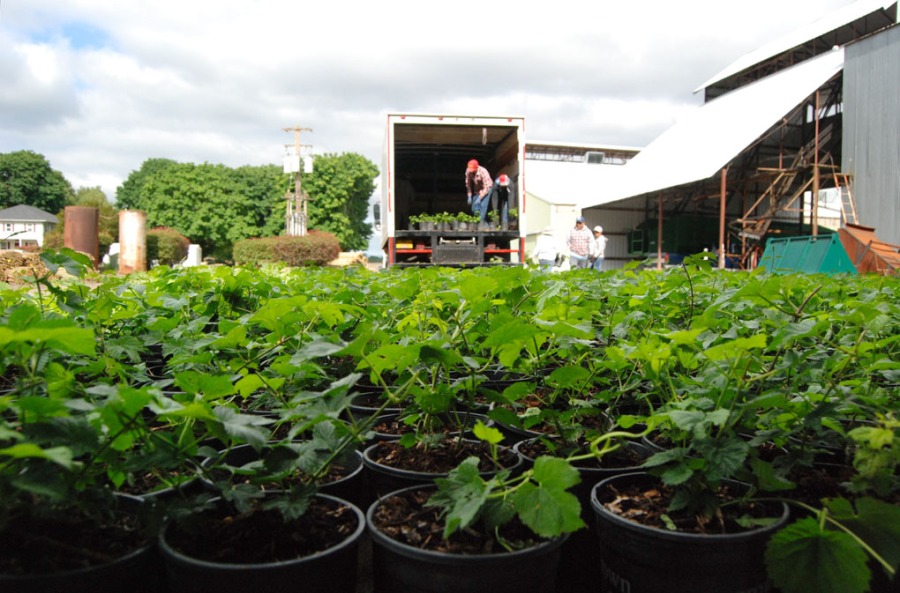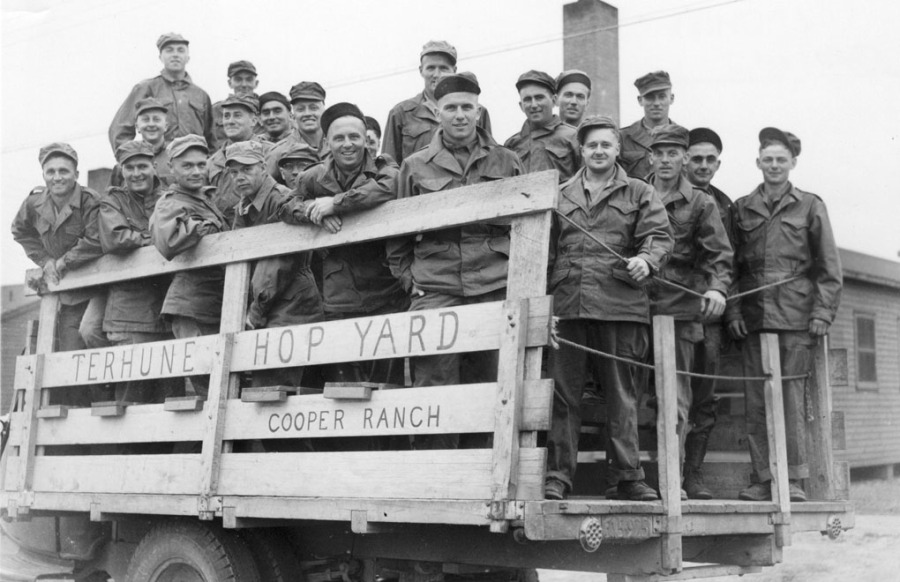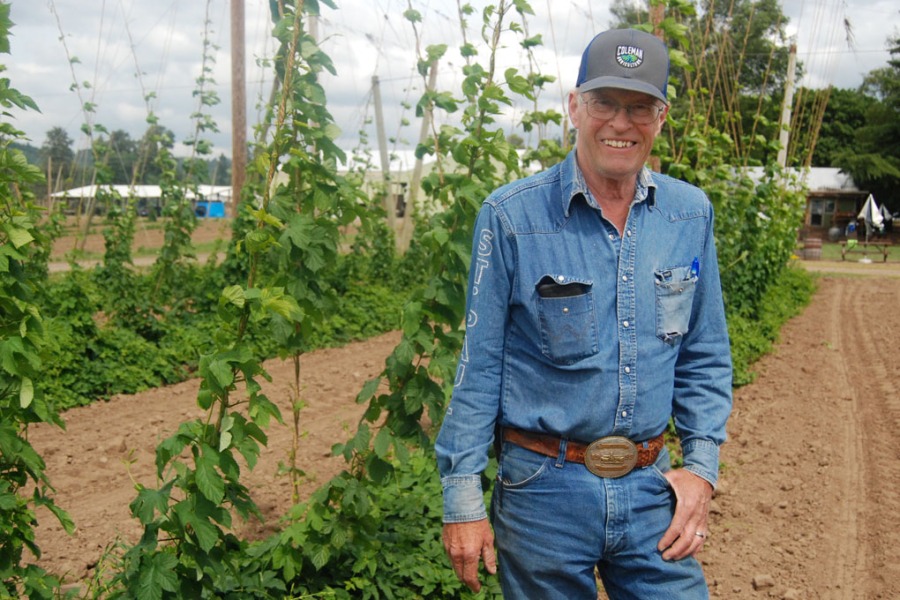 From Rogue:
From Rogue:
Come to Rogue Farms this summer and the Revolution will be to your right.
On the south side of Wigrich Road are some of the biggest changes in the history of the farm.
Let’s start with our two acres of Prickless Marionberries. Planted last spring, they’re bursting with berries we’ll pick for the first time this year. We added an acre of cucumbers. This crop started in the Revolution Garden and did so well we moved it into the fields this spring.
If that doesn’t impress you, how about a new hopyard? Between the cucumbers and the marionberries, we’re planting two new varieties of hops on ten acres. You say you see an empty field? Just wait, it will soon be overflowing with newly planted hops.
Looking for our Dream Rye? We moved it across the Cascades to our farm in Tygh Valley where we planted 20 acres in April. We also doubled our acreage of Risk™ malting barley.
At Rogue Farms we’re a restless bunch, always looking for ways to improve the proprietary palate of flavors we grow for Rogue Ales, Spirits, Ciders and Sodas.
The Grow Your Own Revolution never stops.
THE NEW HOPS OF ROGUE FARMS
After eight years and eight varieties of hops, it was time for something new.
For 2016, we made more changes than usual to what we grow. But it didn’t feel like enough. It didn’t feel truly Revolutionary. Plus there was this ten-acre empty spot in the field. What would we plant there? More corn? More rye?
Our answer was hops. And not just any hops, it had to be hops we’ve never used before in a Rogue beer.
The first of our two new varieties is the Adair hop. Strong on alpha acids, some might be tempted to label this a bittering variety. But we also like Adair for its lemon, herbal and dill aromas. We’ll plant fives acres of Adair this summer.
Our other new variety is Keven. This hop is low in acids with more complex aromas ranging from lemon to cedar, pine, floral, pepper and green melon. We’ll plant five acres of Keven, too.
Together, Adair and Keven make up one of the biggest transformations of the proprietary palate of flavors we grow for Rogue Ales. Add them to our current eight varieties and Brewmaster John Maier has an infinite number of new recipes to experiment with and new styles of beer to craft.
He’s got two years to think about it, and we don’t mind waiting. Whatever John decides to create we know it will be world-class and unlike anything we’ve tasted before. They don’t call him “More Hops” for nothing.

Fresh off the truck, Adair and Keven rhizomes ready for planting this summer.
Hops are unlike anything else we grow. You can’t drill seeds and if things don’t turn out, plant something different the following year.
Building a hopyard begins months before a single hop plant goes into the soil. The crop starts in a greenhouse as cuttings in small pots filled with bark dust. As they grow, we’ll move them into larger and larger pots, while gradually exposing them to the outdoors. This makes the transition from greenhouse to hopyard as smooth as possible.
Then there’s the matter of a trellis. Just one acre of hops requires 45 poles, 21 feet long, buried 3 feet deep and connected with miles of wire. Multiply that ten times for our new hopyard at Rogue Farms. Before you know it, you’ve spent tens of thousands of dollars and hundreds of hours.
Hops also need at least two growing seasons before they produce a harvestable crop. You don’t really know how things are going to turn out until it’s too late to turn back.
Growing hops is about making smart choices, taking risks and staying dedicated. Dare, Risk, Dream.
WHAT’S AN ADAIR AND WHO’S KEVEN?
The Adair hop we named for Camp Adair, a former Army Base in Polk County, the home of Rogue Farms in Independence.
During WWII, soldiers from Camp Adair worked as hop pickers during harvest to help bring in the crop during a period of severe labor shortages.
Thanks to them, thousands of acres of hops did not go to waste. Americans made many sacrifices during the war, but giving up beer was not one them.

Camp Adair soldiers arrive to pick hops. Oregon State University Archives photo.
Our second new hop variety is named for Keven Christensen, the hopyard manager at Rogue Farms.
Keven came to Oregon in 1977 on a visit and decided to stay. He’s been farming hops in the Willamette Valley ever since.
Keven says hops are unique and grow unlike any other plant. But the best thing about hops he says, “is that you can make beer out of them.”

Rogue Farms hopyard manager Keven Christensen.

0 comments (click to read or post):
Post a Comment
Please leave a comment...I do moderate each comment so it may not appear immediately...and please be nice! You can also comment using Disqus (below) or even comment directly on Facebook (bottom).